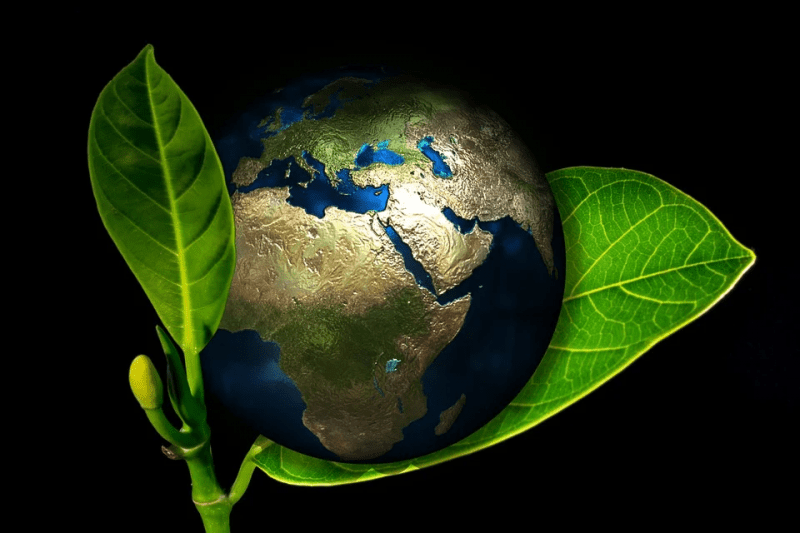Every day, we make decisions that affect the environment. We can choose to live a greener lifestyle by making small changes in our daily lives. Some of these changes are simple and easy, while others require more time or money. All of them will help you become part of the global movement for environmentalism. These tips will help you live a greener lifestyle, from going green with your food to buying eco-friendly products that are better for our planet!
1. Go Green With Your Food
Start with what you eat every day. Most of us don’t realize that eating a green diet can be as simple as changing how and where we source our food. For example, when you buy local produce at the farmer’s market, you’re helping support your community and reduce emissions from transporting food across the country. When you go organic, you’re cutting down on the use of pesticides that damage our planet. And when you eat less meat and more whole grains, legumes, nuts, and seeds (a vegan diet), you’re reducing your carbon footprint and eating healthier at the same time!
2. Use Environmentally Friendly Laundry Detergent
Most laundry detergents are made with harsh chemicals that can pollute our water, damage aquatic life, and increase the toxins in your soil. When you buy laundry detergent that’s eco-friendly, you’re not only saving the planet but also saving money! Make sure to read the label carefully, as not all detergents are created equal. The ingredients that should be included in an environmentally friendly laundry detergent are oxygen bleach, plant-based cleaning agents, and clear packaging.
3. Start a Compost Pile
When you throw food scraps into the trash, it ends up in a landfill where waste is buried and covered with earth. This creates a lot of greenhouse gases that you should be avoiding! Instead, start up your own compost pile outside to recycle waste and make compost for your garden. A compost pile is created from kitchen scraps, coffee grounds, and yard clippings.
To start your own compost pile, gather a few items to use as the base of your pile: grass clippings or leaves, chopped-up twigs or branches, kitchen scraps. Then simply throw them into a bin that catches rainwater. Every time you add new items to the pile, you’ll have to mix them up so the different items are combined. The pile should be about 3-5 feet high and can take 2-3 months for everything inside to decompose fully.
4. Recycle Everywhere!
Recycling is a very important part of living a greener lifestyle because not recycling contributes to the garbage that will eventually end up in a landfill or pollute our environment. When you recycle everything from your paper to plastic, glass, and aluminum cans, you’re doing the Earth a favor! The easiest way to do this is by separating your recyclable items into different bins and setting up a recycling center in your garage. Then there’s no excuse not to recycle!

5. Reduce Paper Waste
If you think about it, paper is everywhere! We use it for notebooks, printing, and even our mail. When we don’t recycle it, the average office worker uses 10,000 sheets of paper per year. To reduce your own paper waste at home or in the office, you can start small by only printing what you need. Then, take the time to shred the documents you don’t need before recycling them. This can be as simple as using an online system to manage your documents or making files on your computer that can be shared.
6. Use Energy Efficient Light Bulbs
Using regular light bulbs actually wastes a lot of energy, since they require more electricity to create the same amount of light that an LED bulb can. What’s more, regular light bulbs might need to be replaced more often than LED light bulbs, which saves you money in the long run.
Replacing your regular light bulbs with energy-efficient ones is an easy way to go green and save energy at home, so start by replacing your current bulbs with LED lights. Besides LED lights, you can also find bulbs that are CFL or halogen, depending on your own personal preference.
7. Buy Eco-Friendly Clothes
Even if you don’t choose to make all of your clothing, you can still start by purchasing eco-friendly clothes whenever possible. Most people know that buying local is one way to be environmentally conscious because it doesn’t require as much transportation to get the product to market. When you buy second-hand clothes, you’re not only preventing waste but keeping clothes out of landfills!
On the other hand, when you’re buying new clothes, choose materials such as organic cotton or bamboo because they don’t require as much water to grow and the production of those materials is less harmful to the environment.
8. Make Your Own Cleaning Products
Most household cleaning products are full of chemicals, so why not switch to making your own at home? Chemicals that are bad for the environment include but are not limited to ammonia, bleach, and perfume. Instead of using harmful chemicals, try making your own cleaning products at home with baking soda or vinegar! Baking soda and vinegar are great at cleaning and deodorizing almost anything.
This is also a great way to save money because you won’t have to buy expensive cleansing agents. These recipes can be found online and you can make cleaning products for almost anything such as the kitchen, bathroom, and laundry room.
It’s time for everyone to go green! The more that people are aware of what they’re doing, the better off we’ll be. By using these simple tips in your own life, you can help reduce waste and pollution while saving money. These tips include recycling, reducing paper waste, using energy efficient light bulbs and buying eco-friendly clothes.
You can also make your own cleaning products to use around the home! Start making an impact on the environment today by following these tips to go green. We hope this article has helped you learn more about how to live an aco-friendly lifestyle.


